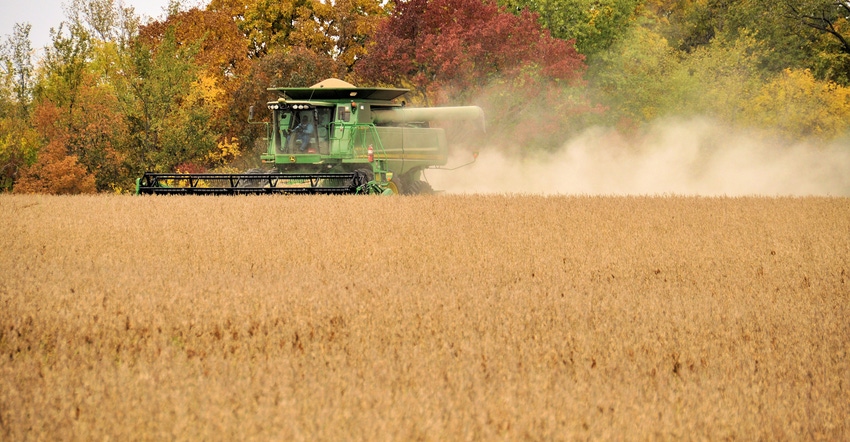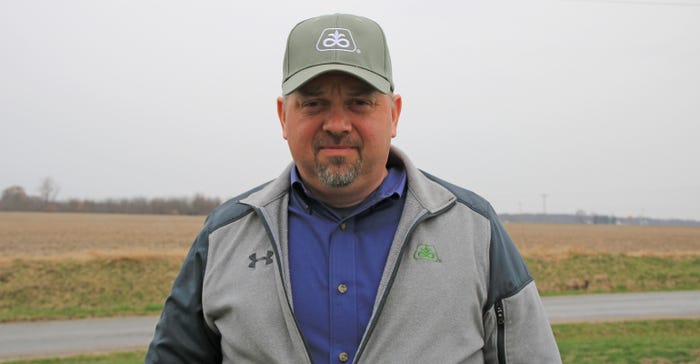
Before snow spread across most of Illinois a week into November, hard freezes hit northern and western areas in late October. These freezes didn’t linger long and proved useful in one respect: They naturally desiccated soybeans that were still green, making the crop easier to combine.
But while frost came in handy, green crops in October are risky. That’s why Atlas, Ill., farmer David Gay says he’s considering changing up his soybean maturities in 2020.
Gay says his yields turned out well with June-planted, full-season beans. He planted late 3 and early 4 maturity varieties and managed to hold yields near his five-year average — even if some of the crop was a little green before harvest. He finished his corn harvest and got to the soybeans by early November, before any noticeable pod shatter from frost.
Gay says he switched soybean maturity groups only on his last few fields, with beans he was mudding in during early July. With the wet season behind him, he’s making new plans for 2020.
“Especially with soybeans, we’re thinking we will move a percentage of the acres into something earlier, a mid-group 3 rather than late 3 or early 4,” Gay says. “We’ll still do the early 4s, but we’re going to spread the risk more.”
Gay, a Pioneer seed representative, says farmers in his area of Pike County plant late-maturity soybeans so they can focus on shelling corn in the first part of harvest before cutting beans.
“That’s the way it’s usually done around here in this part of the state. And generally, we get higher yields with full-season soybeans, but we kind of ran into some harvest issues this year by doing that,” Gay says, noting other farmers in the area are considering spreading out their maturities, too. The first frosts improved harvest conditions considerably though. And they helped take care of weeds.
Seed treatments
Pioneer agronomist Matt Montgomery says he remembers trying to set up field trials with Gay and throwing his hands in the air as rain foiled their plans, for example, to study grape colapsis. While the early-season insect had a significant presence in Illinois fields in 2018, the rain in 2019 limited populations from appearing in similar numbers.
“This year it was terrible for getting plots in. I’ve got to tip my hat to my reps, because we got a lot of plots even for a tough season,” Montgomery says, noting Gay’s area is at the “forefront of grape colapsis reappearing in the western part of Illinois.”

ON THE CASE: Pioneer agronomist Matt Montgomery says Pioneer is starting to offer multiple modes of action with insecticide seed treatments to fight the reemergence of grape colapsis.

Gay says white grubs and grape colapsis have appeared in greater numbers over the past four years, causing severe damage in 2018.
“These were pests that we dealt with 20 years ago,” he says. “That was really before we started using insecticide seed treatments on corn. We were applying soil insecticides to manage those pests, and then once the insecticide seed treatments came to market, we went that way and they really kind of disappeared.” He says the strategy has lost effectiveness over time due to the insect’s adaptability.
Montgomery says Pioneer is now using more than one mode of action in insecticide seed treatments to try to counter this reemergence.
“There’s no reason that I’m ready to say it’s the bad word, ‘resistant,’ or anything like that, but they’re reappearing at pretty impressive levels, and I’d rather we change things up for them now than wait for a laboratory confirmation five years down the road,” Montgomery concludes.
About the Author(s)
You May Also Like




